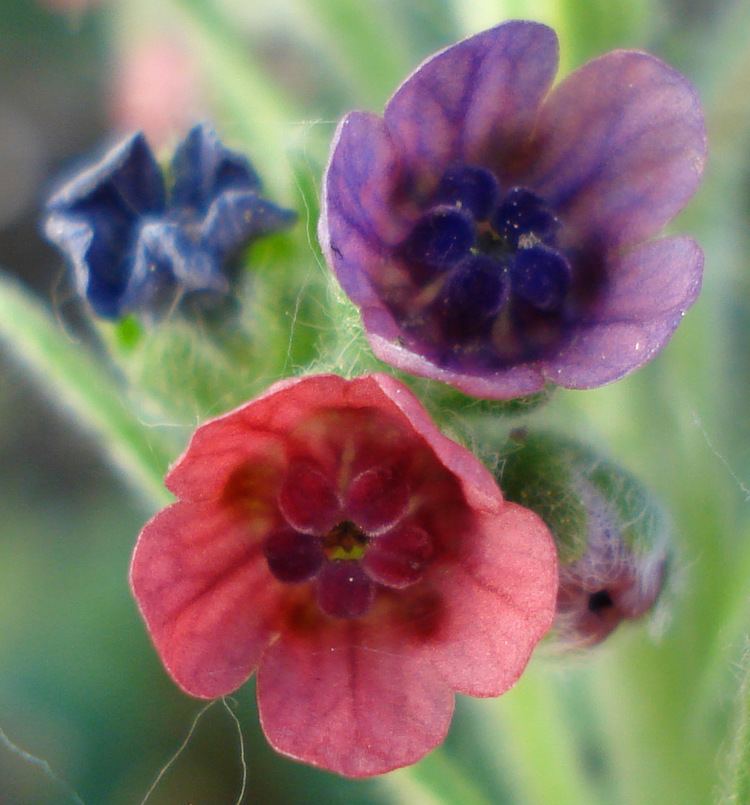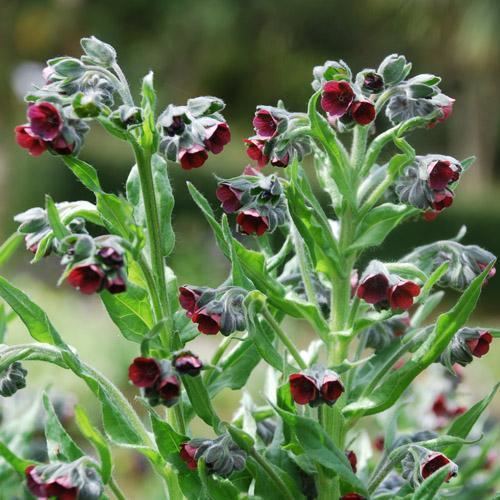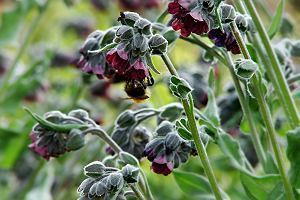Rank Species | Order (unplaced) Genus Cynoglossum Higher classification Cynoglossum | |
 | ||
Similar Cynoglossum, Boraginaceae, Anchusa officinalis, Echium vulgare, Anchusa arvensis | ||
Houndstongue cynoglossum officinale gypsy flower 2012 05 30
Cynoglossum officinale (houndstongue, houndstooth, dog's tongue, gypsy flower, and rats and mice due to its smell) is a herbaceous plant of the family Boraginaceae, found in most parts of Europe, and also North America where it was accidentally introduced.
Contents
- Houndstongue cynoglossum officinale gypsy flower 2012 05 30
- Growth
- Folklore
- Herbalism
- Toxicity
- References

Growth

It can be either annual or biennial, with reddish-purple flowers blooming between May and September. It lives in wet places, waste land and hedges.
Folklore

The name houndstongue comes from the belief that it could ward off dog attacks if a leaf was worn in the shoe.
Herbalism

Herbalists use the plant as a treatment for piles, lung diseases and persistent coughs. Houndstongue ointment is said to cure baldness and be used for sores and ulcers. These uses are not supported by scientific evidence.

In 1725, houndstooth was presented in the family dictionary, Dictionaire oeconomique, as part of a cure for madness. In that book, madness was viewed as "a distemper, not only of the understanding, but also of the reason and memory, proceeding from a cold, which drys up everything it meets with that is humid in the brain." To cure madness, Dictionaire oeconomique noted:
You must shave the head of the unhappy patient, and after that, apply to it a pidgeon, or a hen quite alive; or else bathe it with some brandy distilled with rosemary, elder, hounds tooth, and the roots of bugloss, or with the oyl of elder flowers: they rub their heads and wash their feet with a decoction of the flowers of camomile, melilot, balm gentle and laurel; they put into their noses the juice of comfrey, with either two or three spoonfuls of honey-water, broth, or white-wine, wherein wormwood and sage are infus'd ; or else they do for five and twenty days together, mix with their broth in the morning, halt a dram of the ashes of tortoise, and they put into the pot bugloss, borage, with a pinch of rosemary to season it.
In the 1830s, houndstooth was known in France to be made into an emollient and diuretic for daily use in inflammatory diseases, especially of the urinary organs. To prepare as a diuretic, the houndstooth leaves were mashed, and then boiled in water to extract oils, volatile organic compounds, and other chemical substances. The mix could be sweetened with liquorice to create Ptisan of Dog's-grass. After decoction, the herbal tea was taken internally a cupful at a time. In 1834, the Hospital of Paris provided a formula of 2/3 ss—J to Oij of water for houndstooth tea. By the end of the 1830s, doctors in England were using houndstooth as an antiaphrodisiac to combat venereal excesses.
In 1891, the U.S. state of Michigan identified hounds tooth, along with flea-bane, rag weed, burdock, cockle-bur, and stickseed, as some of the worst weeds in the state.
Toxicity
Cynoglossum officinale contains tumorigenic pyrrolizidine alkaloids.It is toxic to cows and is specially dangerous to pasture owners.
